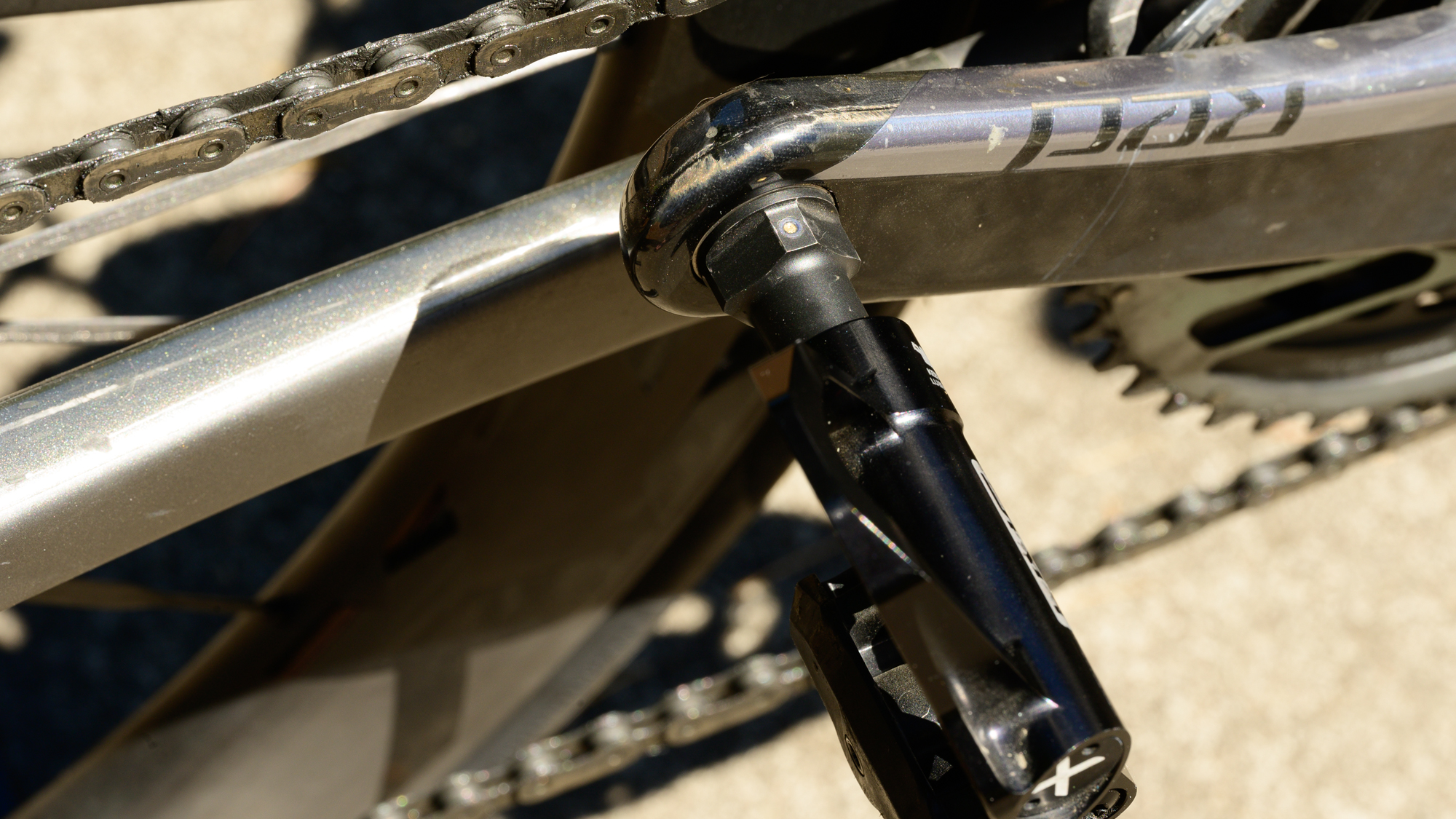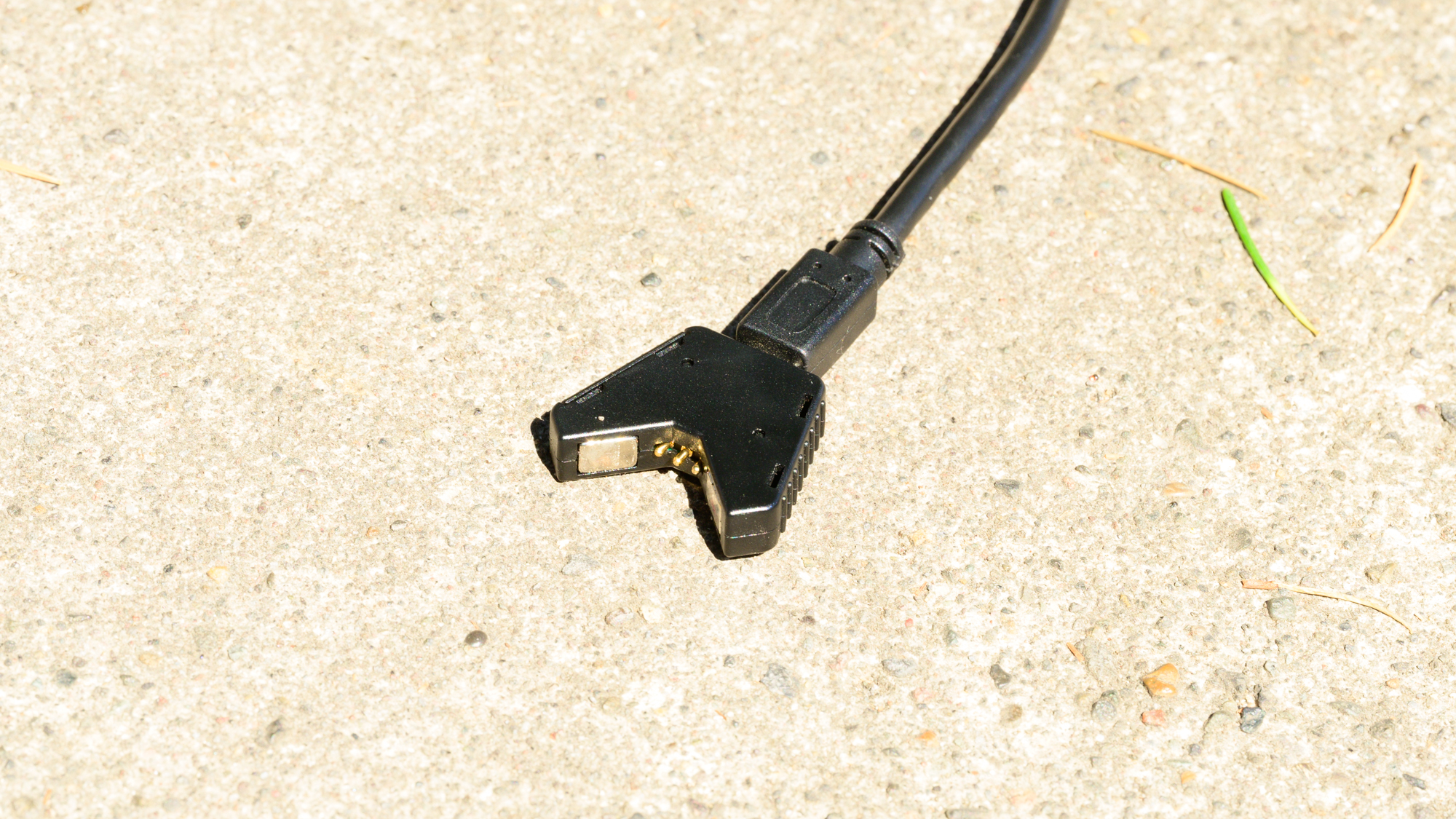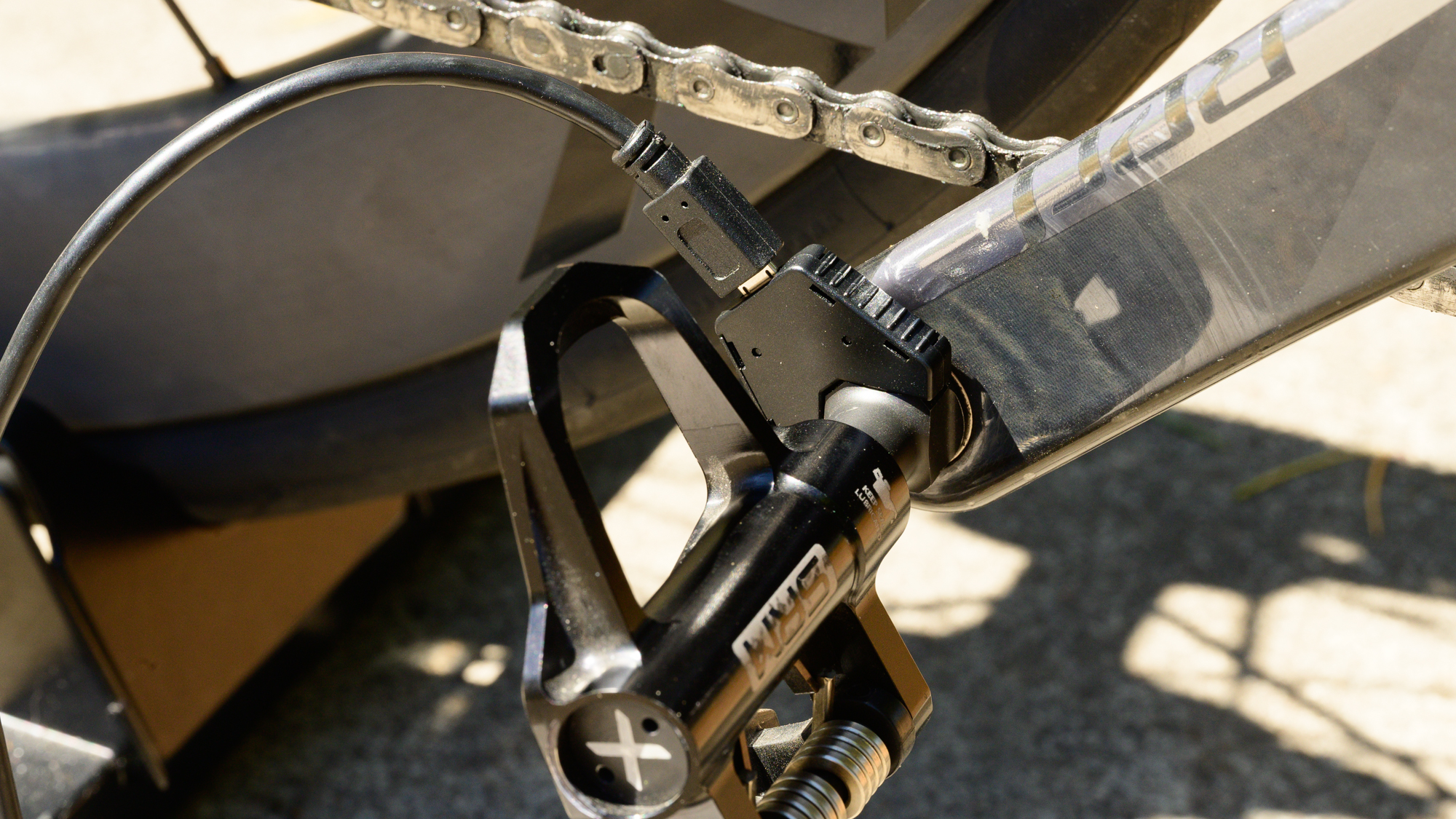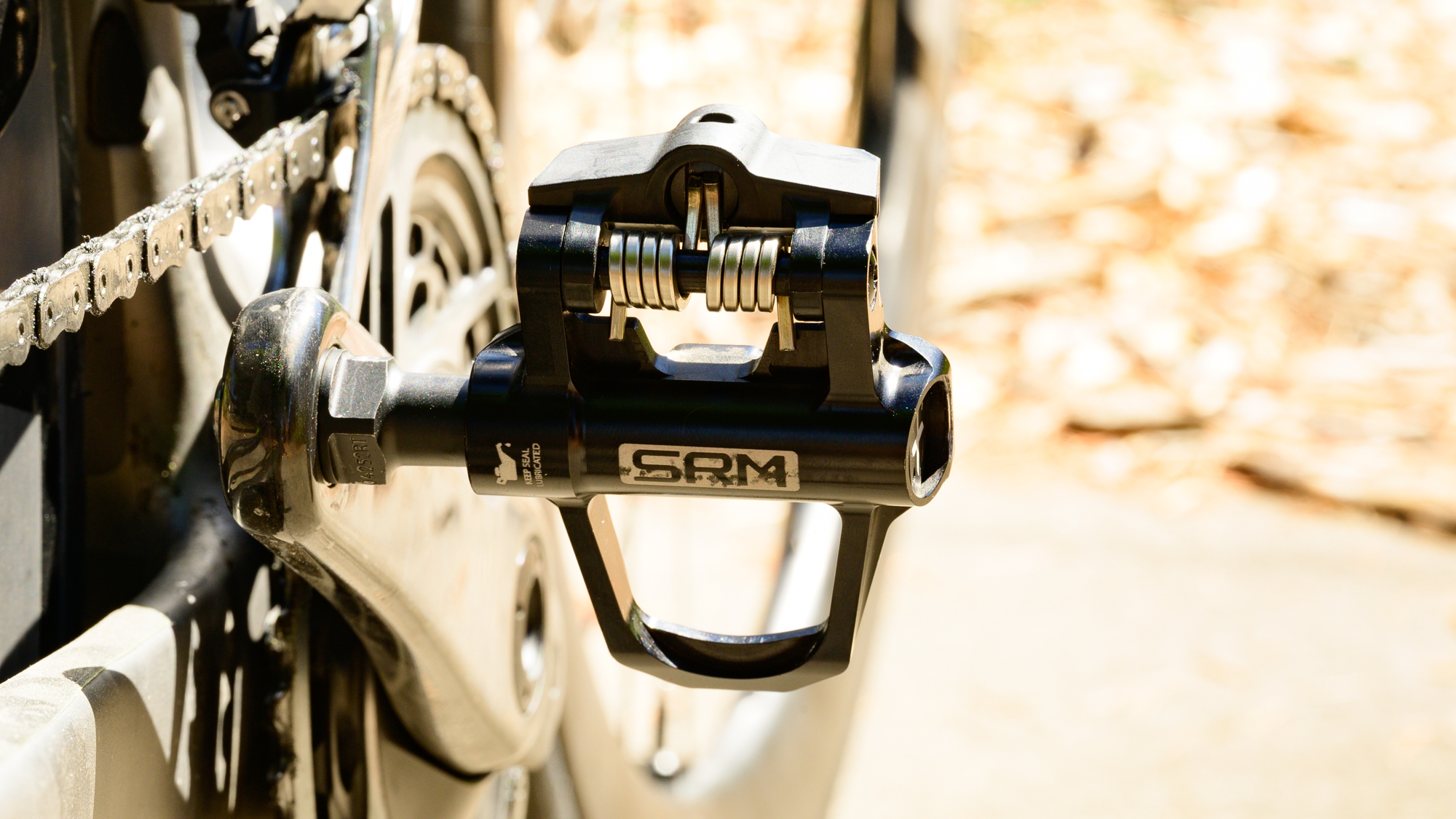
As I'm writing this, I'm deep in the research phase of updating our best power meters buyers guide. One of the things I'm finding, while working on that project is the rich tapestry of options that actually exist. It's easy to think that there aren't many choices when it comes to power meters for bikes but I'm finding the opposite, there are a lot of options and nothing is as clear cut as I thought.
Price: $1499 / € 1499
Accuracy: ±2%
Body: Anodized Aluminum
Stack Height: 9.5 mm
Q-Factor: 53 mm
Battery Life: 30h – Rechargeable
Weight: 284 grams as measure for both pedals
Warranty: 2-years
One of those brands that I might have written off initially is SRM. As someone who never rides without power, I certainly knew about SRM but I'd bought into the idea that the brand wasn't relevant anymore. SRM created the power meter segment of cycling products but surely other brands had surpassed the technology from SRM, right?
If that all sounds like something you might have thought also, keep reading. SRM is not only still relevant but the brand continues to innovate and bring new options to market. I've spent the last month or so, including a trip across the world, testing a brand-new set of SRM power meter pedals. My experience has changed my mind and it might also change yours.
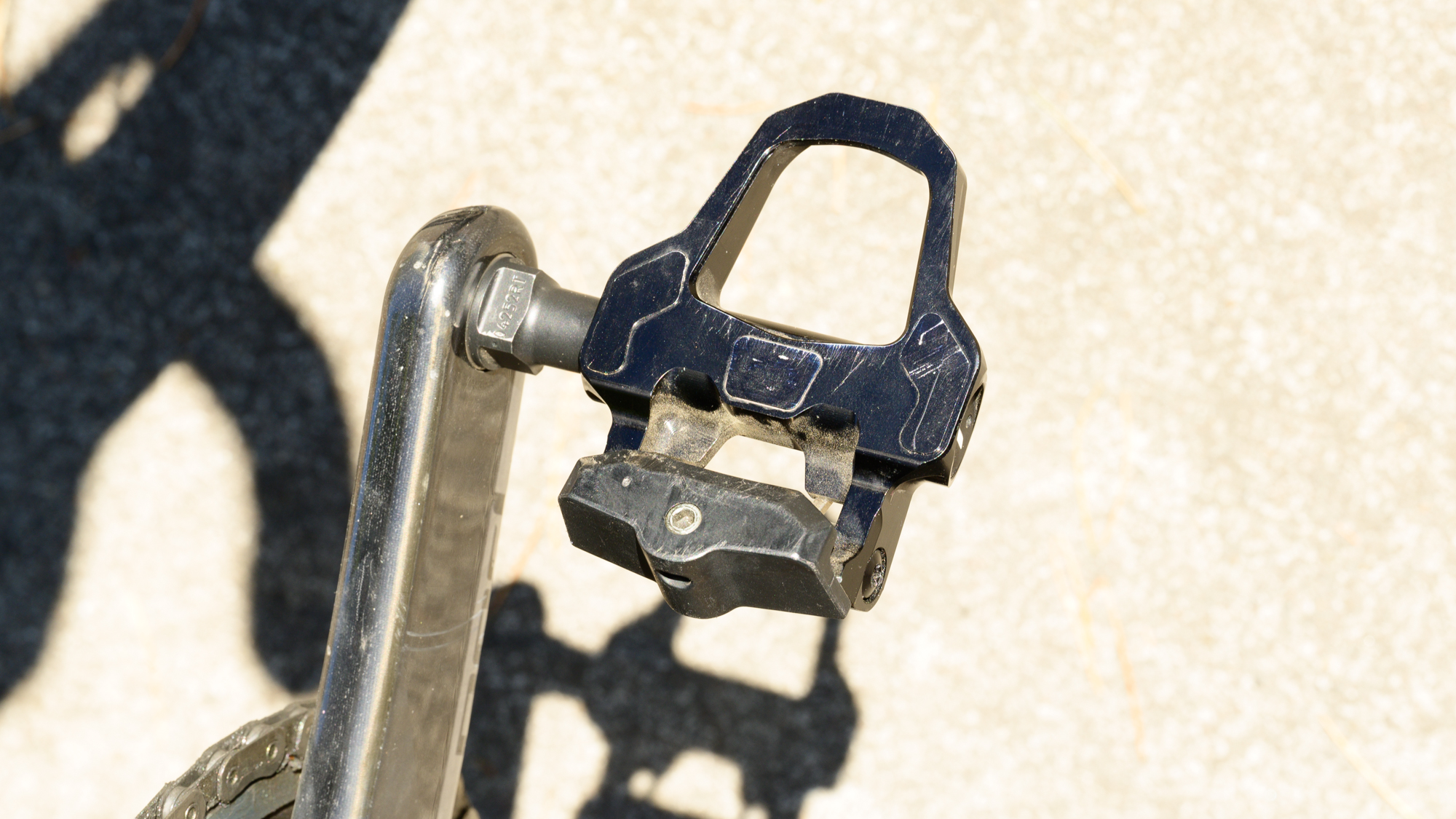
Design and aesthetics
When it comes to power meters, anything you add to your bike to measure power also has to serve another purpose. Wheels used to be a popular solution for adding power but that option has disappeared. That leaves options for cranks and pedals and there is some nuance about where on the crank the measurement happens. bigger picture though, there are reasons to choose one vs the other but it's a discussion best left to the best power meters buyers guide. This review focuses on pedals.
The reason that explanation is important is because the SRM X-Power pedals are pedals first. In this case, that means they start with an aluminium pedal body and an SPD-SL cleat interface. The weight for one pedal is 142 grams on my scale and visually it's seriously minimal compared to Garmin Rally pedals.
The SRM pedals are lighter than both Assimo and Garmin but primarily that is because there's just less to them. Although the Q-factor number is the same 53mm that Garmin quotes, the pedal body starts farther from the threads of the pedal and is narrower. There's also no pod between the pedal body and the threads.
What you will find on the inside, just behind the threads, is a small contact point. It's easy to miss but this is where the magnetic charger connects to the pedal. There's a charger connection point because SRM has taken the route of internal battery rather than deal with the issues Garmin has experienced.
The side effect is that despite the 30-hour battery life, there's no bulging or obvious spot where the battery fits. In fact, there is no obvious visual giveaway that these pedals are power pedals. All the sensors, and the rechargeable battery, fit within a standard-looking pedal axle and body. The only exception is the small charging connection plus a clear plastic dome that sticks out ever so slightly through the crank arm. It's the same as Garmin and it does also mean you need a pedal wrench rather than just a hex wrench.
In case I've not emphasised enough how minimal the pedals are, they also have less stack height than the competition. Garmin has the highest stack height at 13.5mm while the lowest competitor is Assimo at 10.5. The SRM X-Power road pedals are 9.5mm.
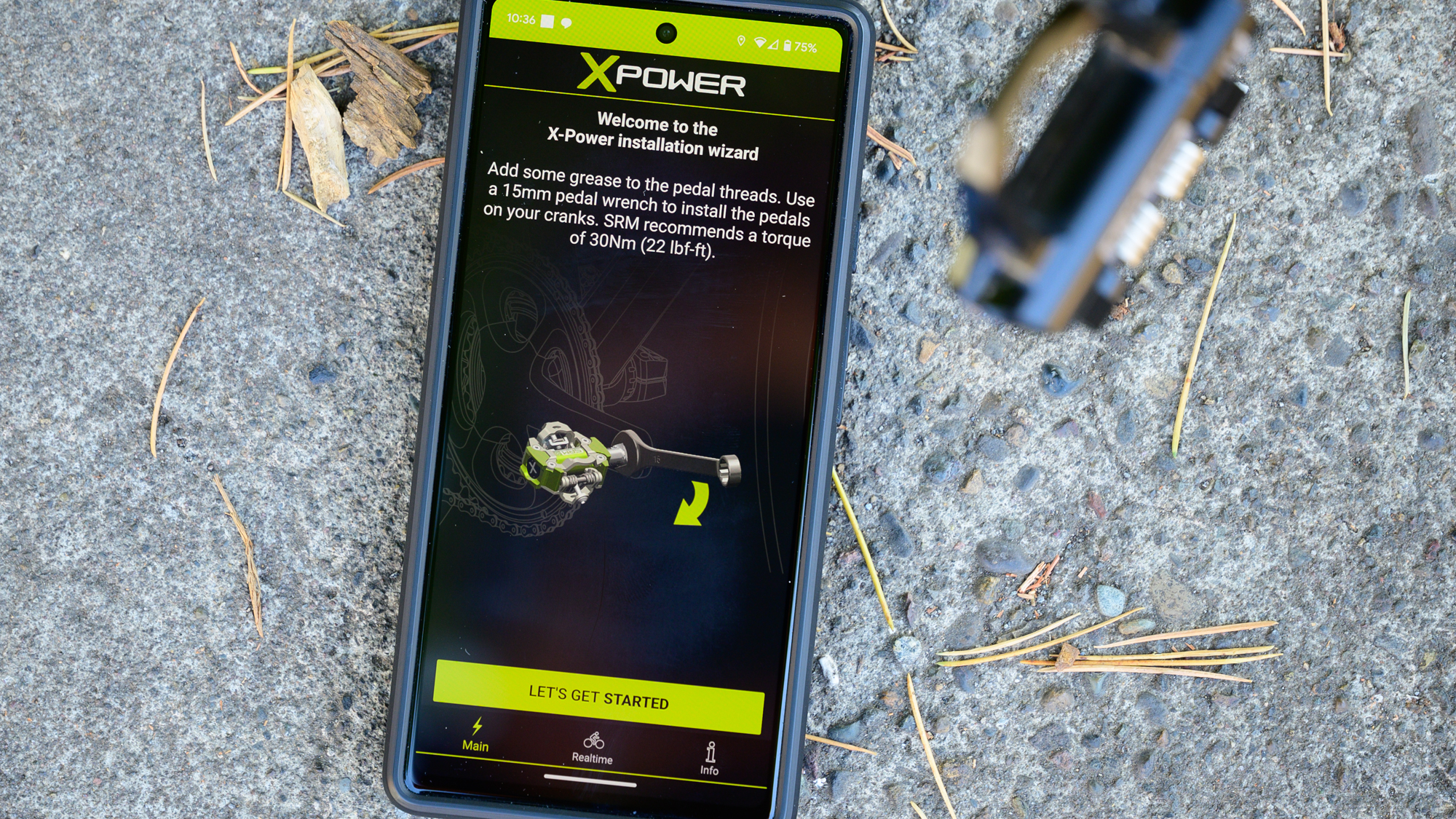
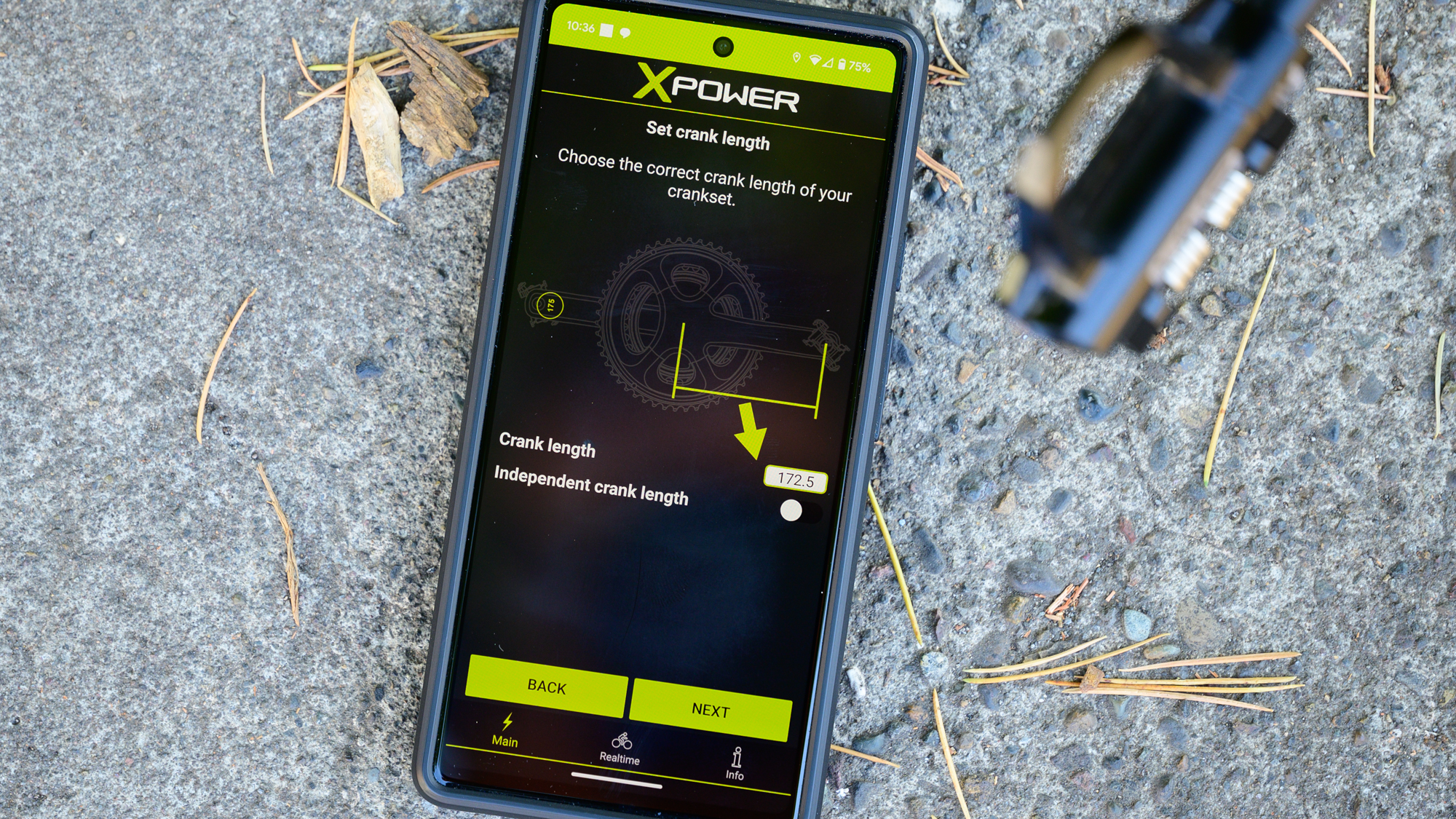
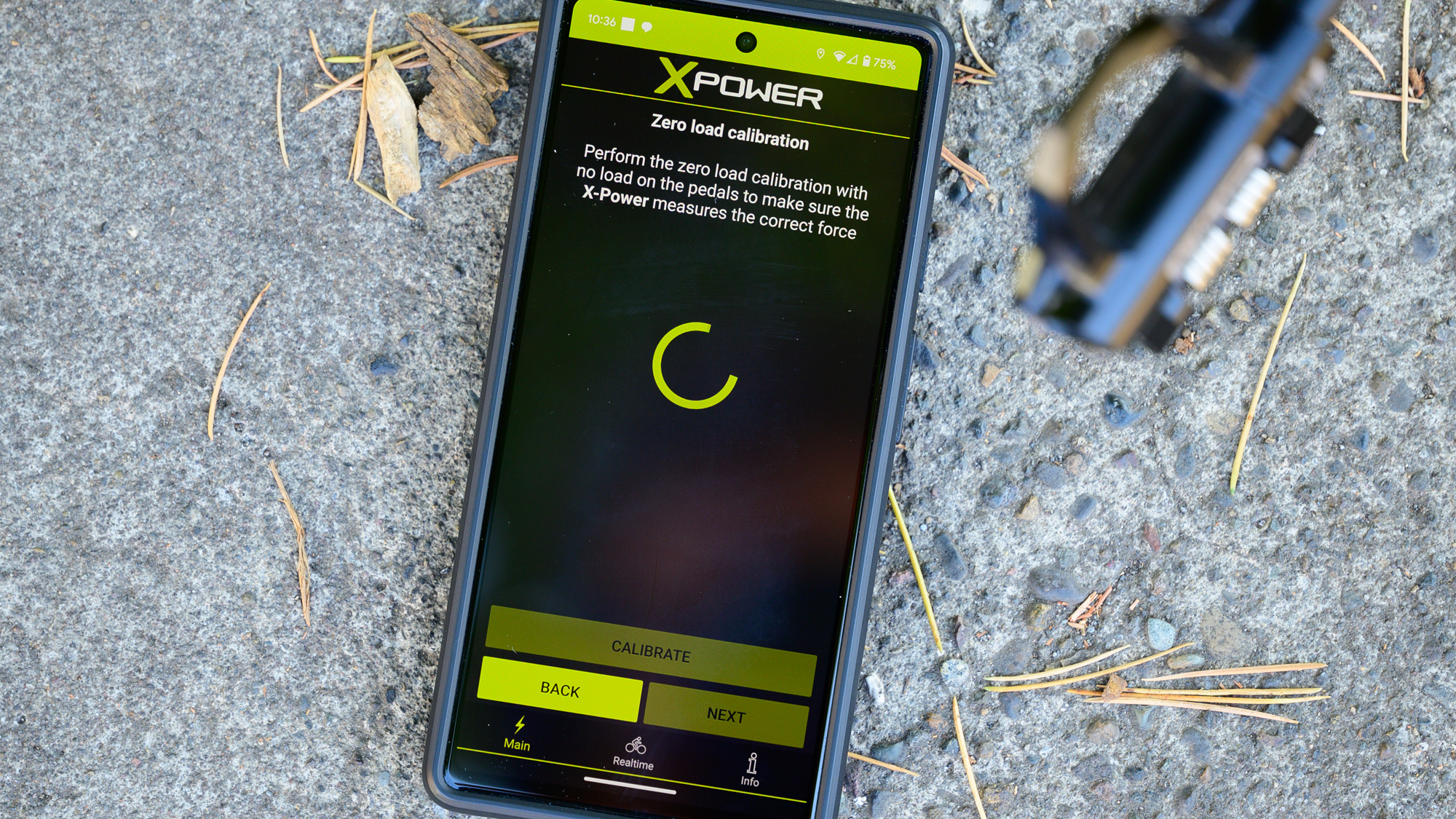
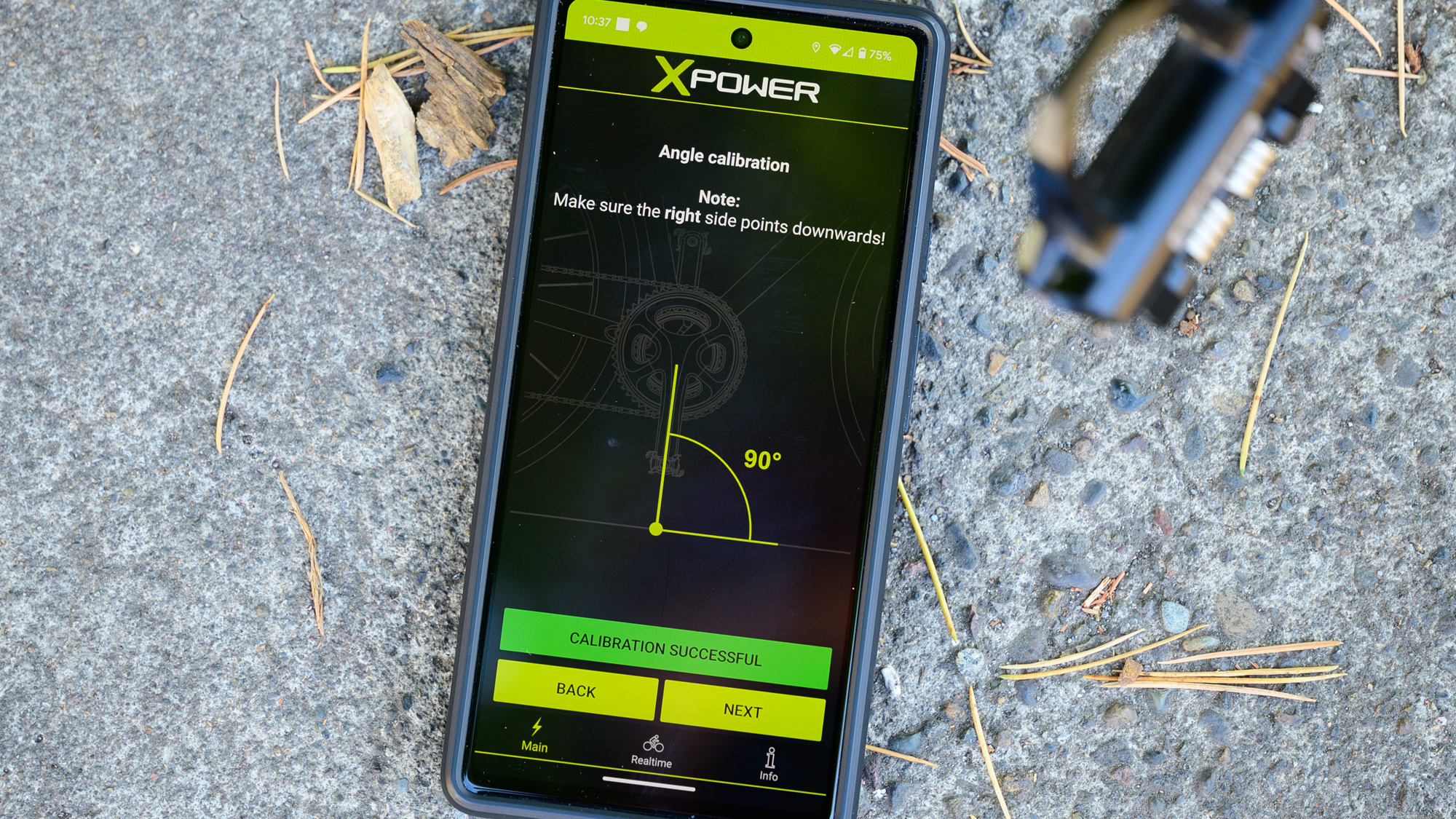
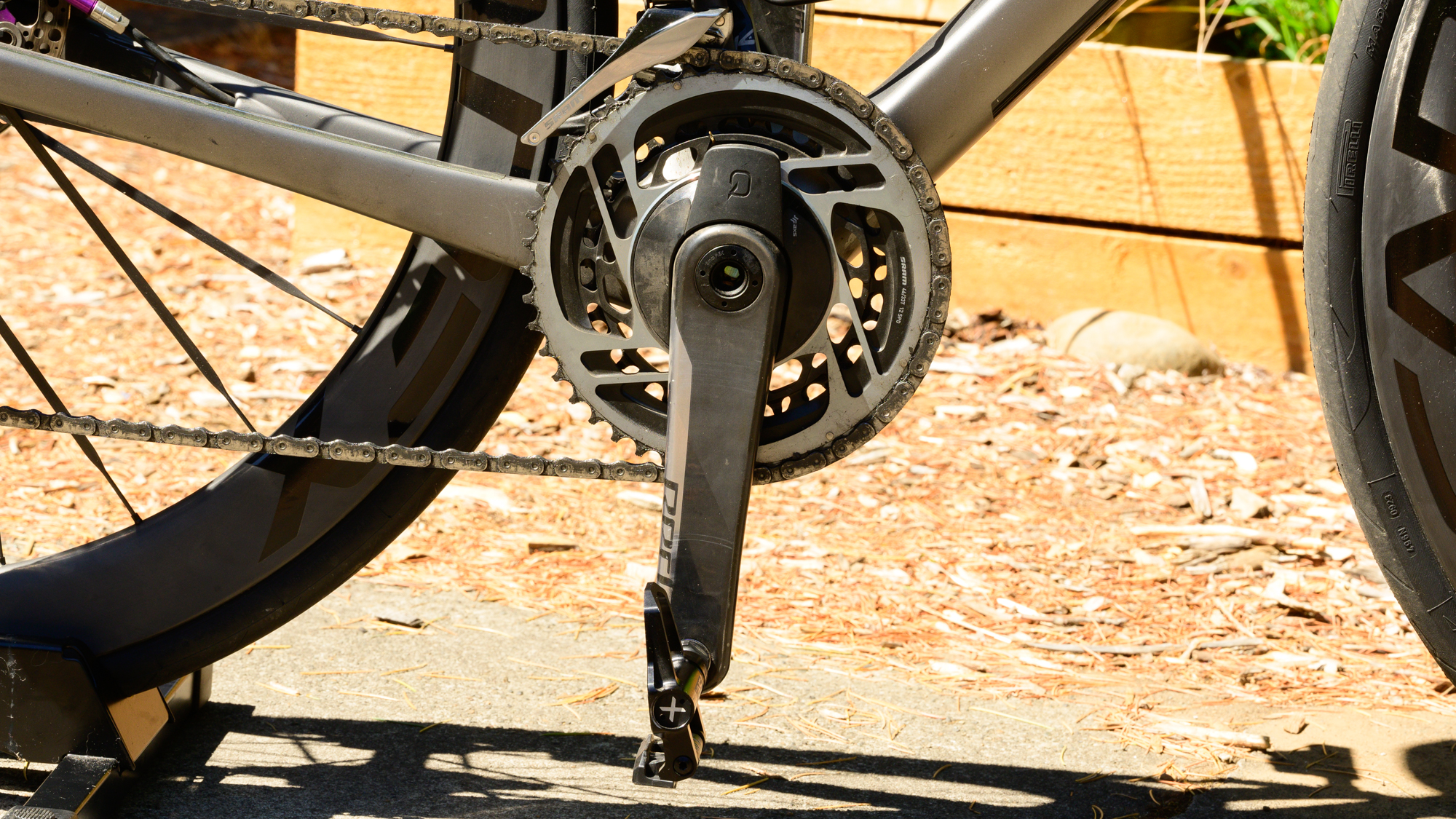
Installation
These are pedals right, no installation needed? Actually, there is a process and it's one of the downsides to the SRM pedals. To get started, you will need to fire up the Xpower app. The Xpower app is surprisingly good though. It doesn't match the breadth of Garmin Connect but everything works and I never experienced any crashes. That's a low bar perhaps but for a small brand, it's not always a given.
Once the app is open, I like to give the pedals a spin each. The bearings on my pair of SRM pedals are smooth and loose so they always fall into place to clip in and if you hit the bottom you get a satisfying spin that will wake up the pedal body. SRM has the option of dual-sided or single-sided, with an upgrade available, but my pair are dual-sided. Instead of each pedal connecting, the left pedal connects to the right which reports power so the right always connects first.
You'll need to run through this process each time you move the pedals so in many cases the pedals will already show up in the app. Either way, hit install at the bottom. If they are already connected, hit next. The first thing you'll see is a scan for the left pedal screen which you can skip if you've been here before. The next screen is where you will set the crank length and there's an option for independent crank lengths. Next, you'll set the zero load calibration.
The final screen is the one that deserves a deeper dive. On this screen you need to point the drive side pedal directly down at 90 degrees to the ground. If you want accurate measurement, this has to be just right. You can do it on a ride but get off the bike and look closely. If you get it wrong the power will not measure accurately.
The final step is then to make sure you disconnect the app from the pedals. Given that I use ANT+ to connect to my head unit I initially thought it was fine to leave the Bluetooth connection open. It still seems like it should be but SRM warned repeatedly that it could cause issues. Now I force close the app through Android to make sure it's disconnected.
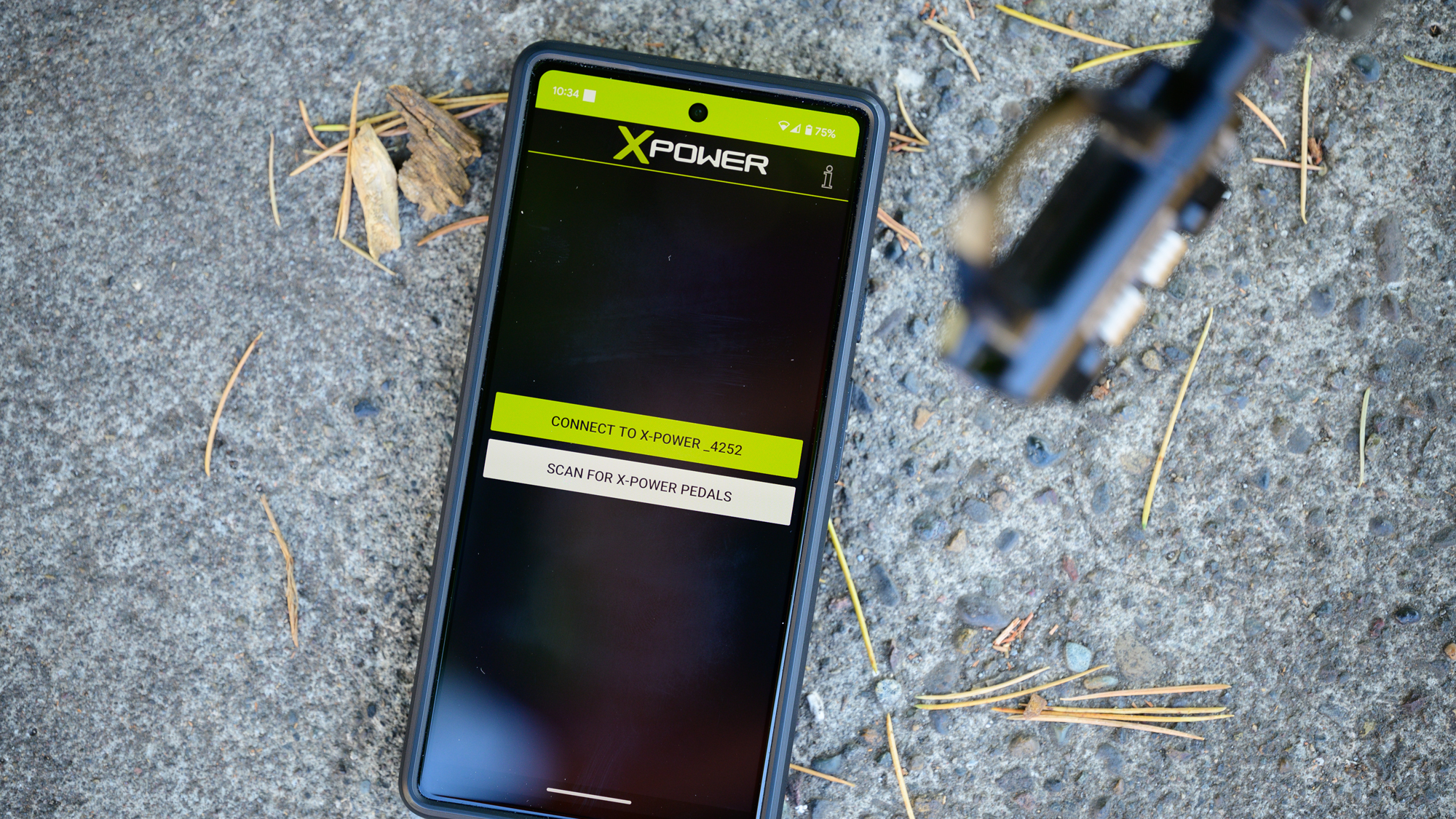
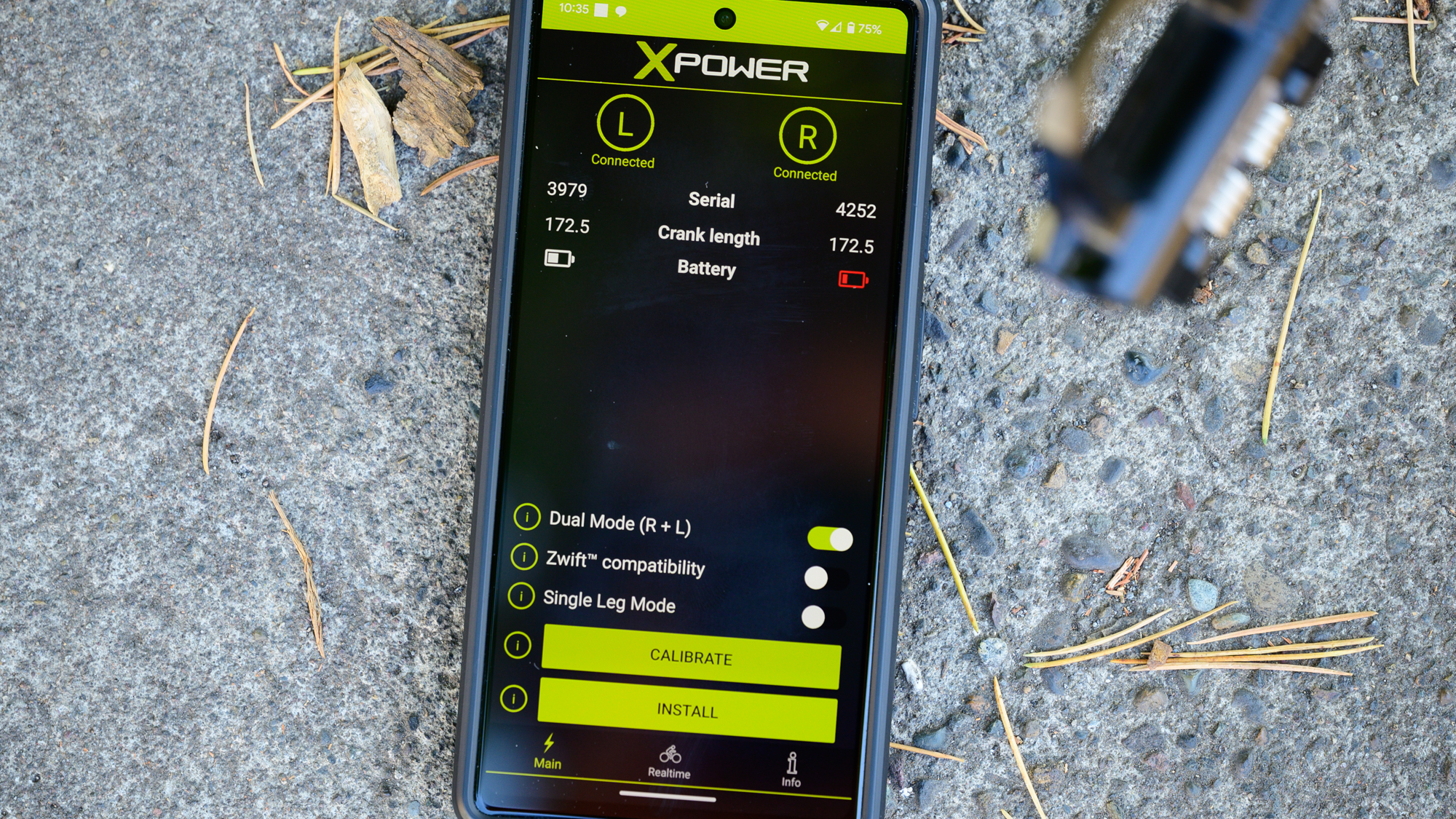
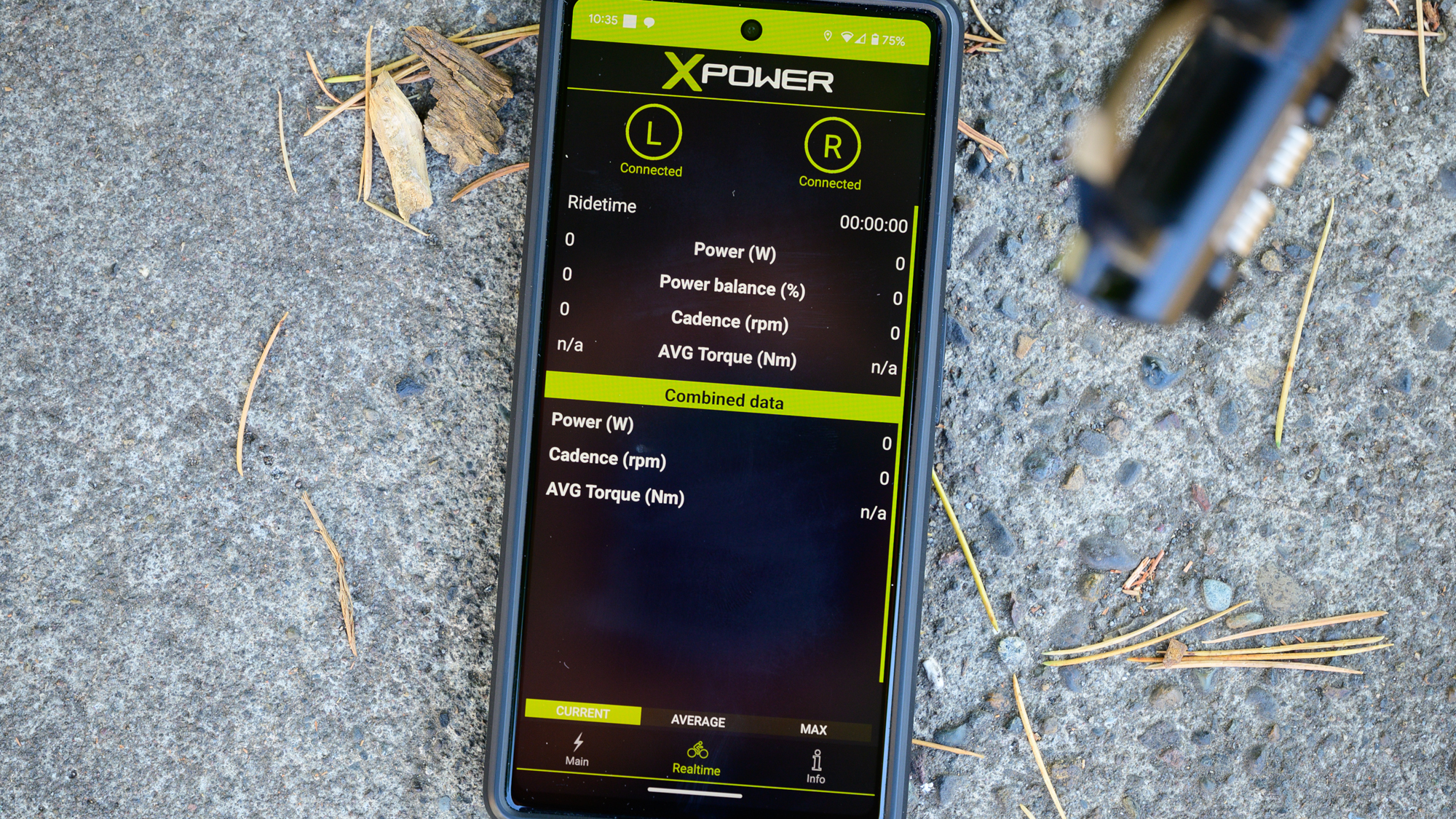
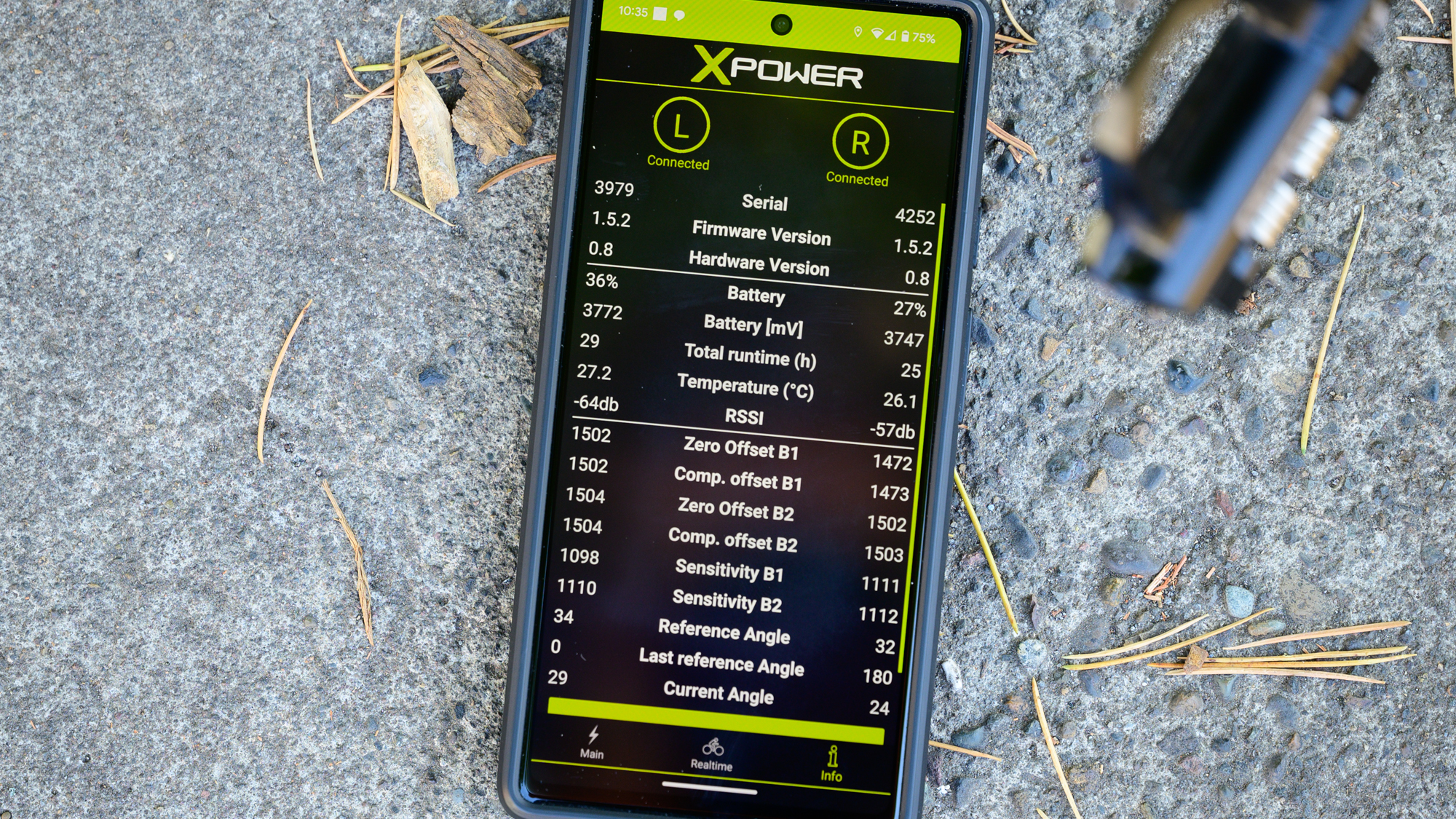
Performance
Before diving into the actual ride experience, it's worth discussing the installation a bit. Before I really understood the process I had issues. You don't need to torque your pedals, and it's easy to set the zero load, but the angle matters a lot. I'll be honest that I don't love that part of these pedals. Garmin doesn't require it and it makes moving the pedals a little bit harder. More importantly, once I got it wrong, I then found myself second-guessing the process constantly.
As I've done the larger investigation of power meters, and pedal-based options by extension, I've come to understand a little more about this. It was actually the engineer responsible for Rotor power meters that explained it best. She said essentially it's easy to get accurate measurements of force in a perfect world. That's the Zero load measurement. What's more difficult is getting accurate measurements in a world where the forces are all over the place.
Rotor and SRM both claim less than +/-1% accuracy and in the case of these pedals, the spec is +/- 2%. That should be worse but what I've learned is that the number given there is an estimate. Rotor, SRM, and Power2Max all said the same thing, which is that there's a degree of arbitrariness in saying what that number is. Every company knows that pushing on the crank with a weight and spinning it will be perfectly accurate.
The question is how accurate can you make your estimation as angles change. Rotor addresses the problem with more frequent sampling while SRM seems to address it through this install process. For my purposes, I wanted to verify the end result. I don't care how a company accomplishes it, I just want accurate measurement.
I recorded the same ride with the SRM pedals and a Red AXS power meter and looked for discrepancies. What I found was that each power meter tracked the peaks and valleys correctly with the SRM reporting the peak about 1 second slower than SRAM. The average for the pedals is 5 watts higher but that makes sense given that pedals are closer to the source of the power (your legs).
If you aren't surprised that a pair of high-end power meters essentially show the same numbers, you aren't alone. This is exactly what I expected all along and one of the challenges I faced when I started working on power meter reviews in general. Although relatively few people change pedals a ton, I thought they were still the best options because there was little downside.
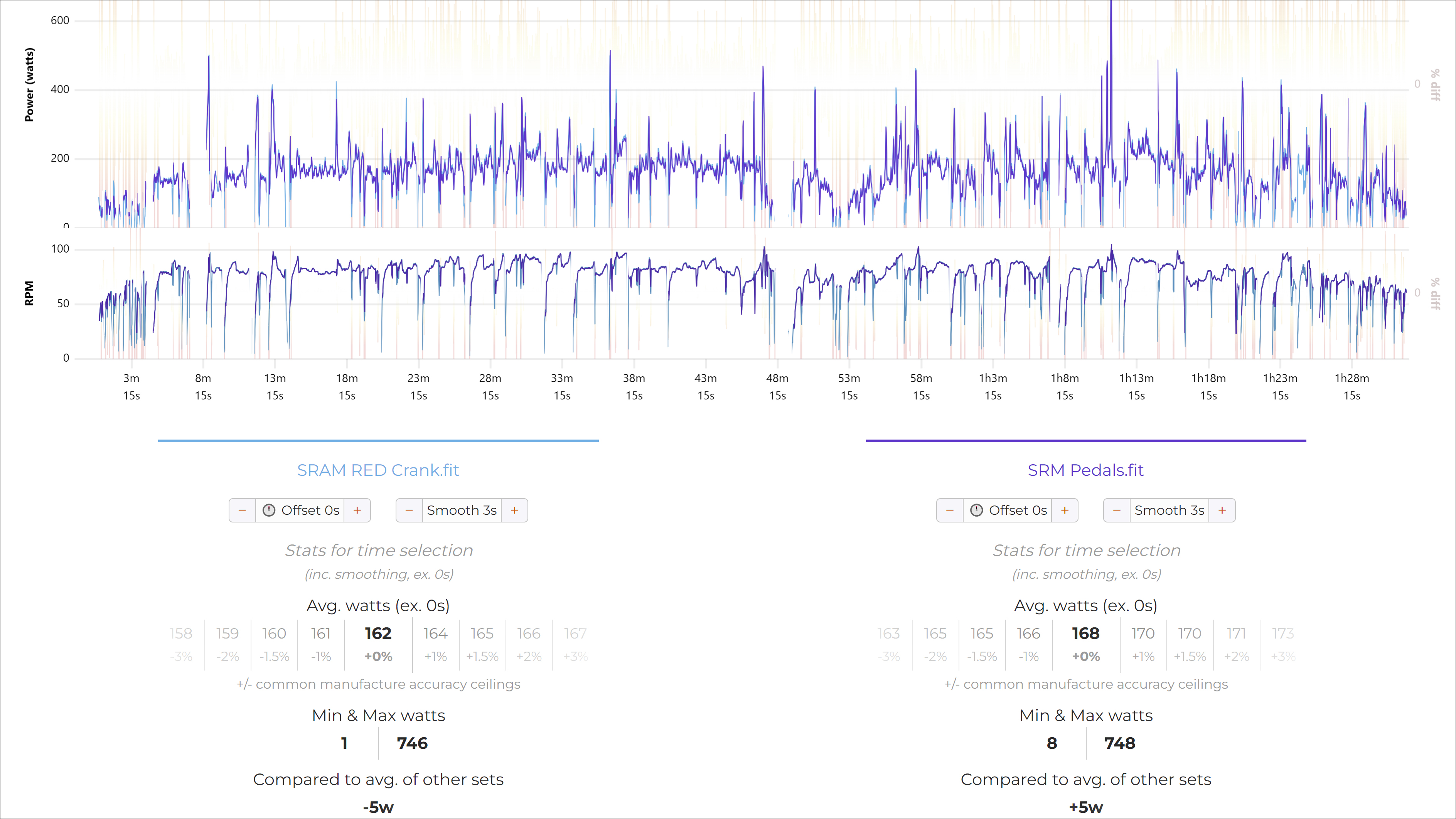
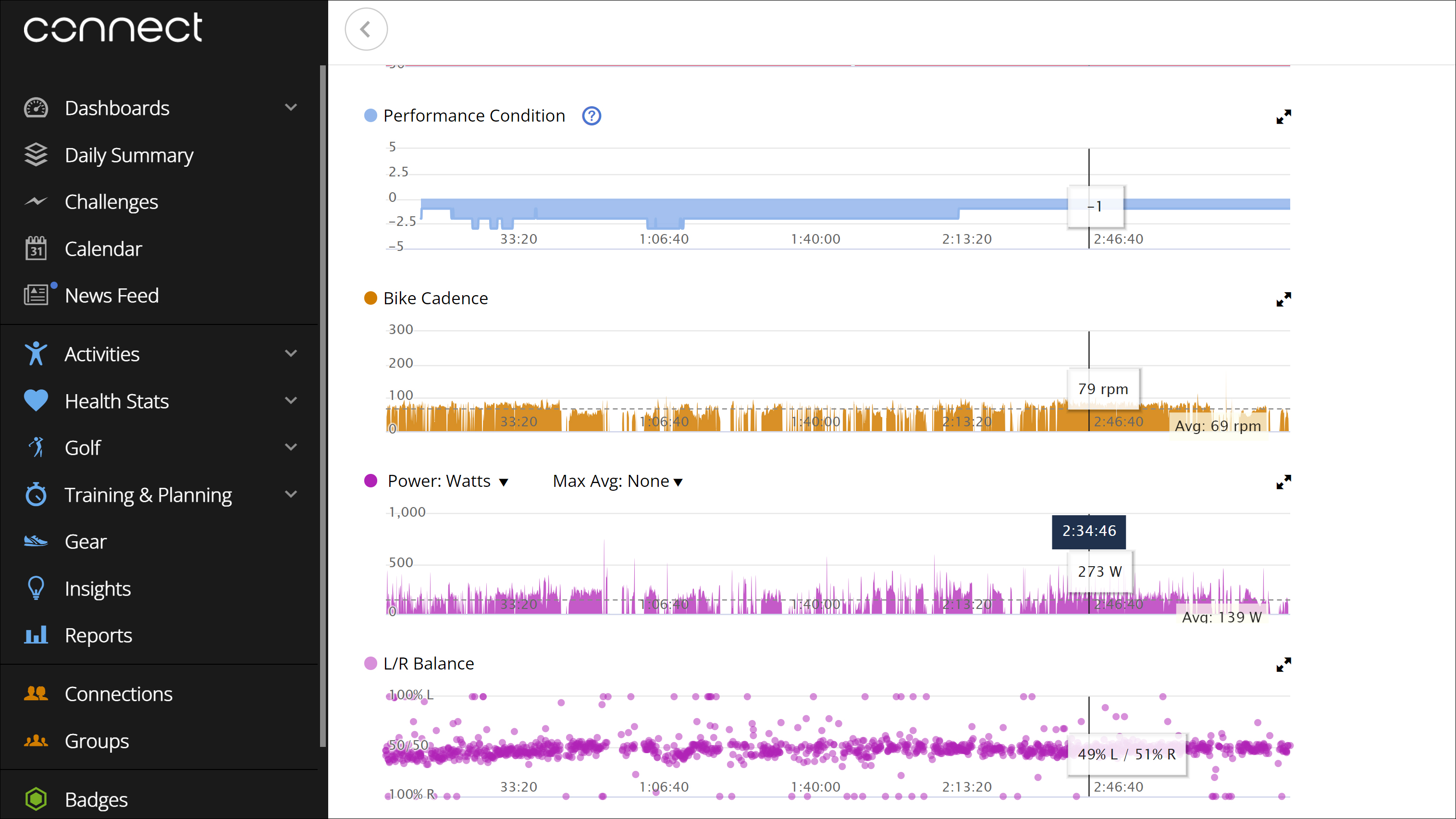
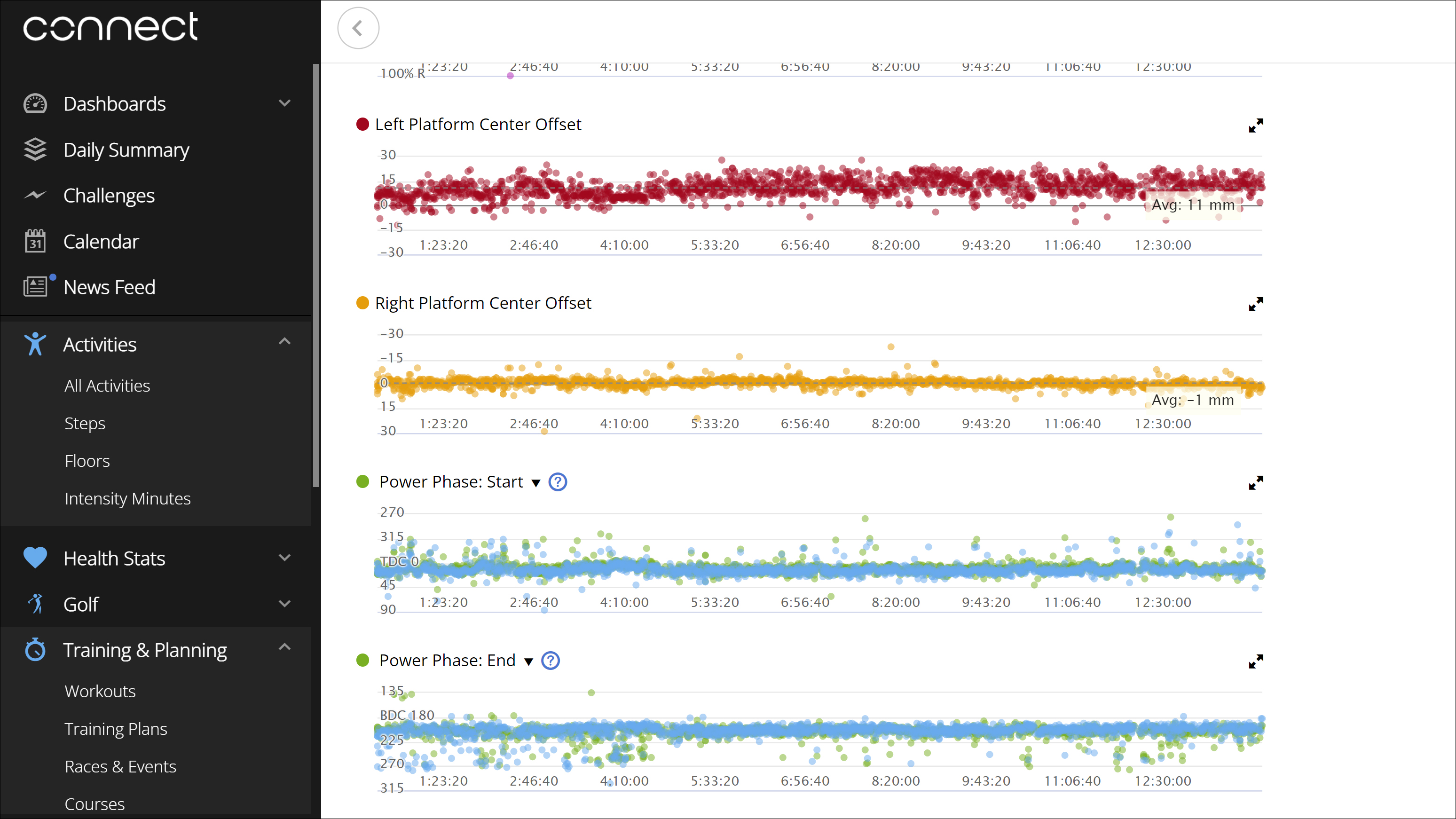
The SRM XPower road pedals have changed my mind a bit. The reason you might want to choose a crank-based power measurement is that non-power pedals feel really great to ride with. If you still need pedals though, there are differences in the choices.
I've ridden with Garmin pedals since version 2. They are great and I always recommend them but the first time I clipped into the SRM pedals I realised I'd been missing something. The SRM pedals are lighter and they keep my shoes from rubbing the cranks. The retention is also more positive. They just feel better to ride with. In contrast, the Garmin pedals feel floaty, heavy and imprecise. I honestly never noticed until I had both to compare but it’s very obvious jumping back and forth.
They aren't without challenges though. I took the SRM Xpower pedals with me to Europe. I loved the idea of telling a story about riding from Prague to Vienna on a set of SRM pedals. Unfortunately, I had to unexpectedly give up half my luggage early and I made the choice to give up the pedal chargers. It was a mistake but I didn't think it would matter. Garmin pedals hold a charge for months, turns out the SRM pedals do not. They will lose some charge over time, even when sitting, and the travel wasn't kind to the battery life.
It turned out that what I was able to check on that big ride was how the pedals respond when they run out of power. I can tell you that there are no strange power readings that occur. They just die and stop reporting power.
The other challenge with the SRM XPower pedals is that you get less data than Garmin pedals. Both pedals, if you have the dual pedal systems, give left-right balance and cadence but Garmin adds power phase start and end, as well as platform centre offset. This is data I've never used but more data is always good and SRM doesn't offer it.
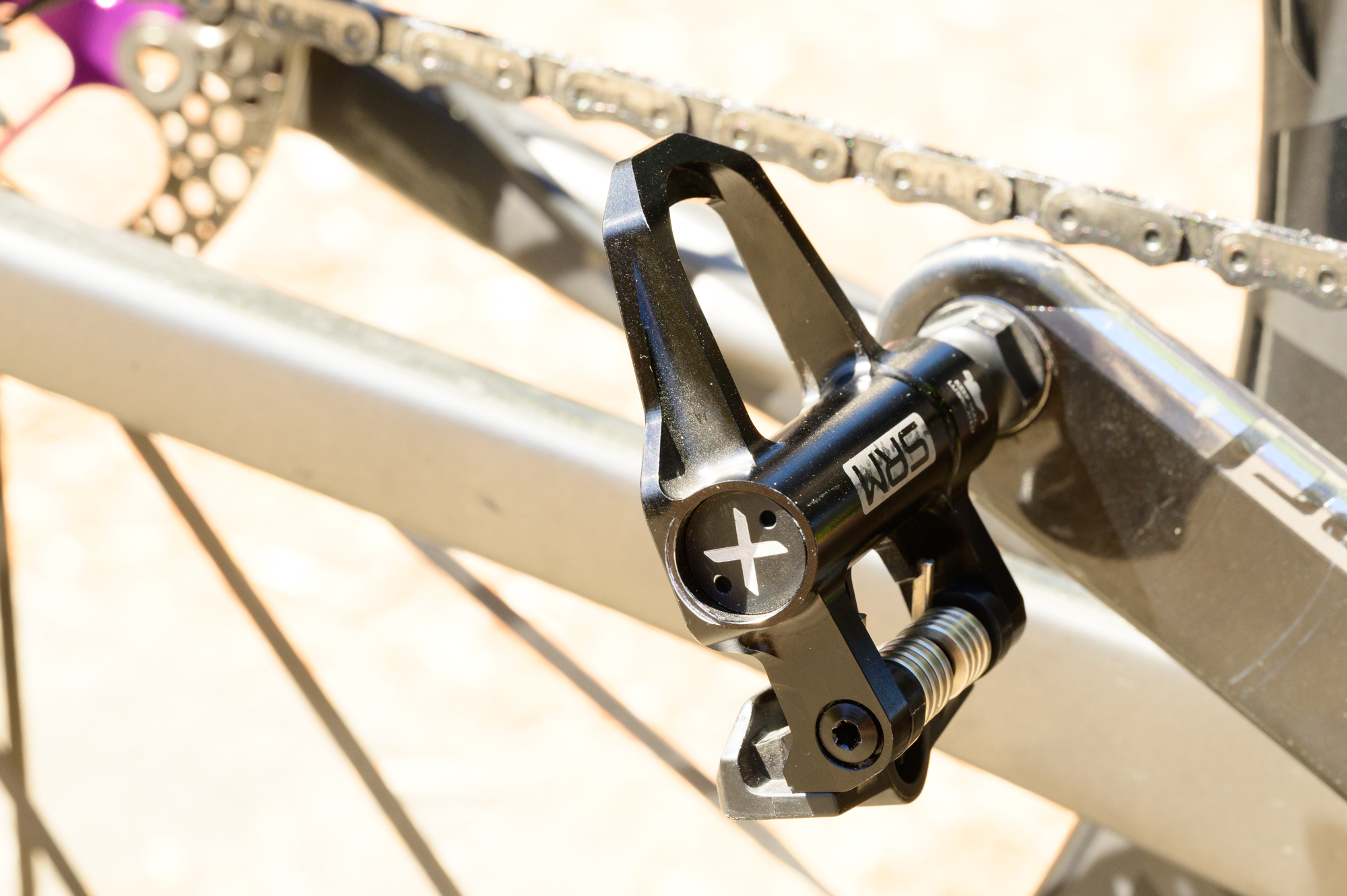
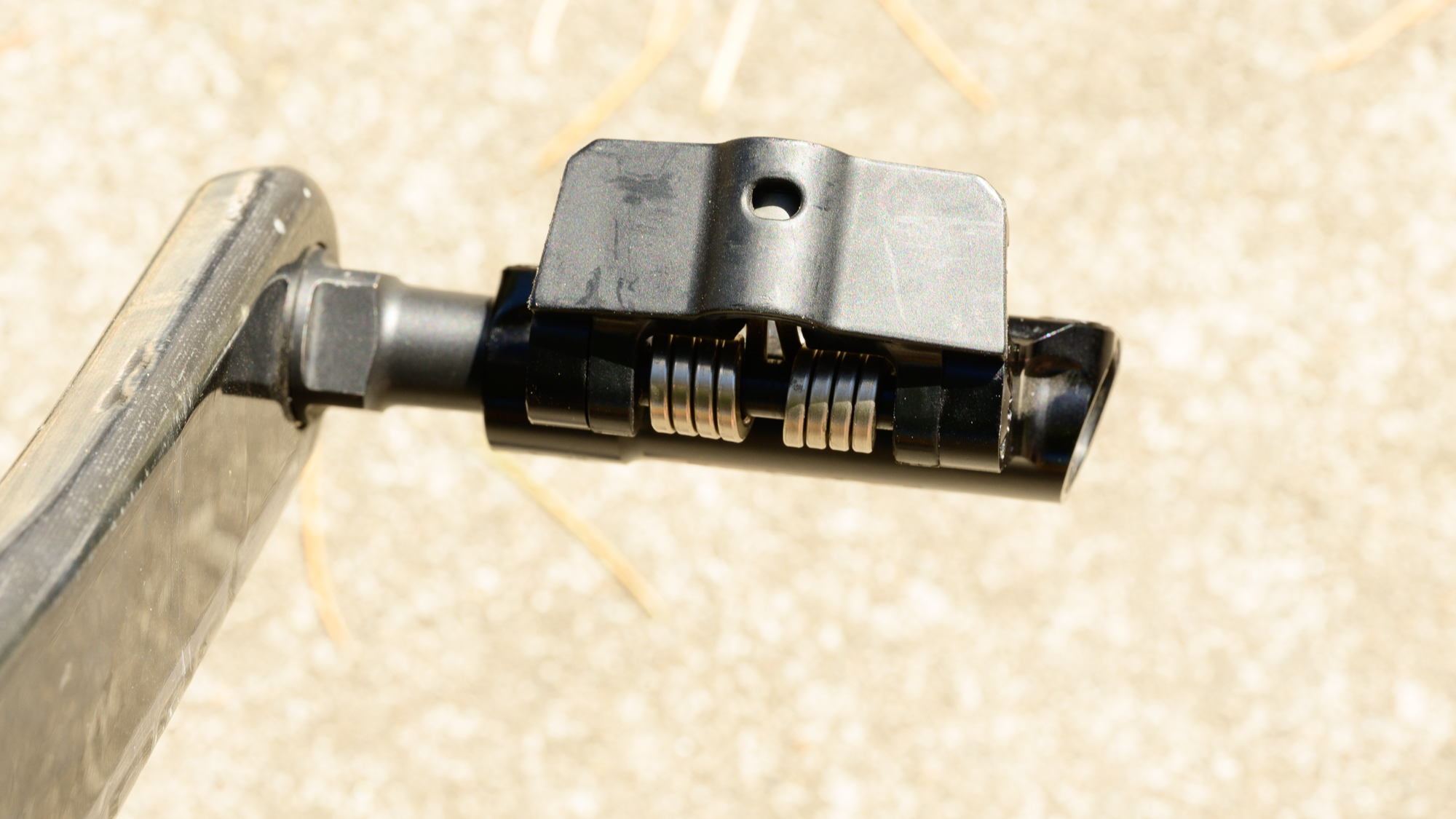
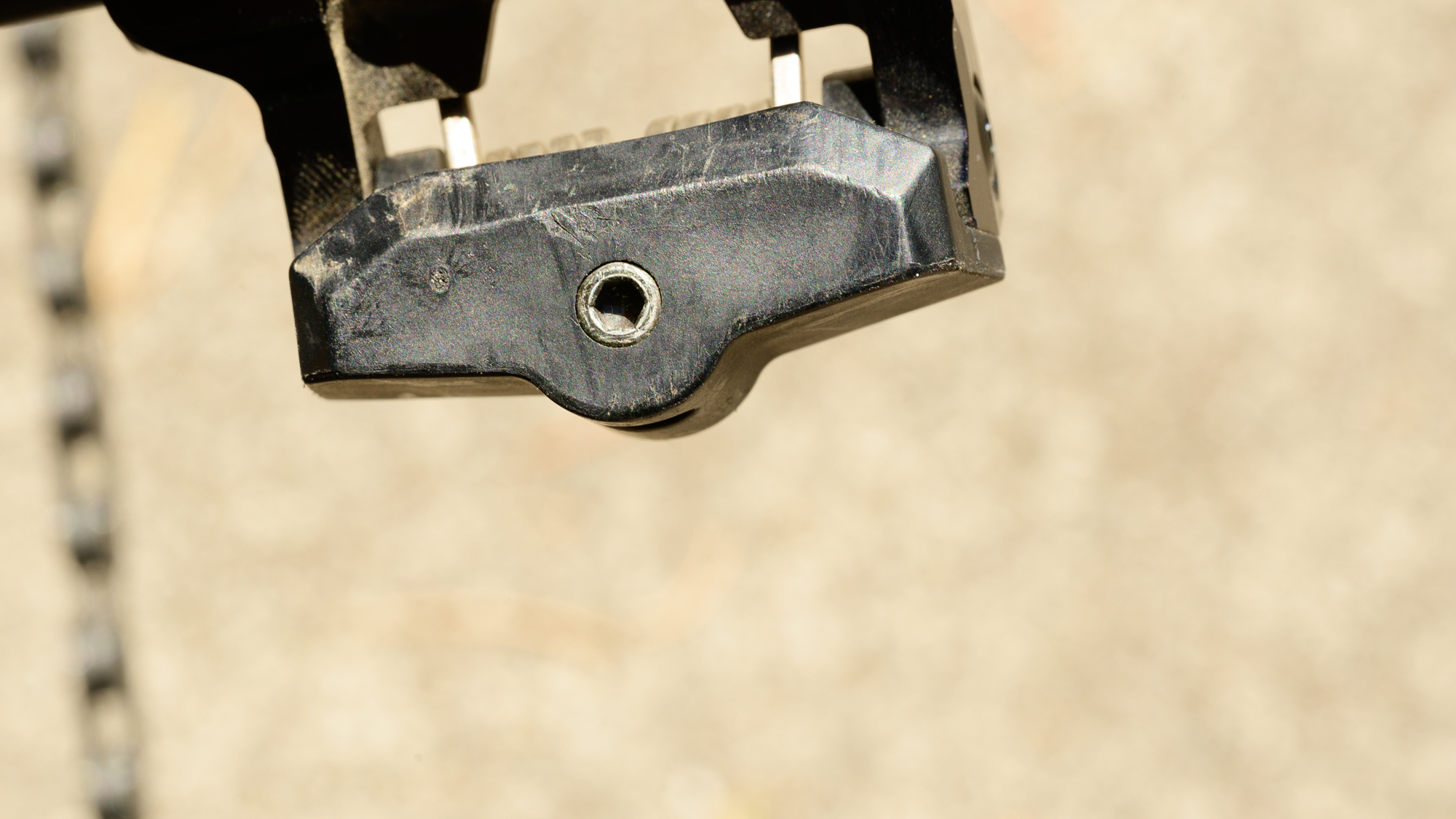
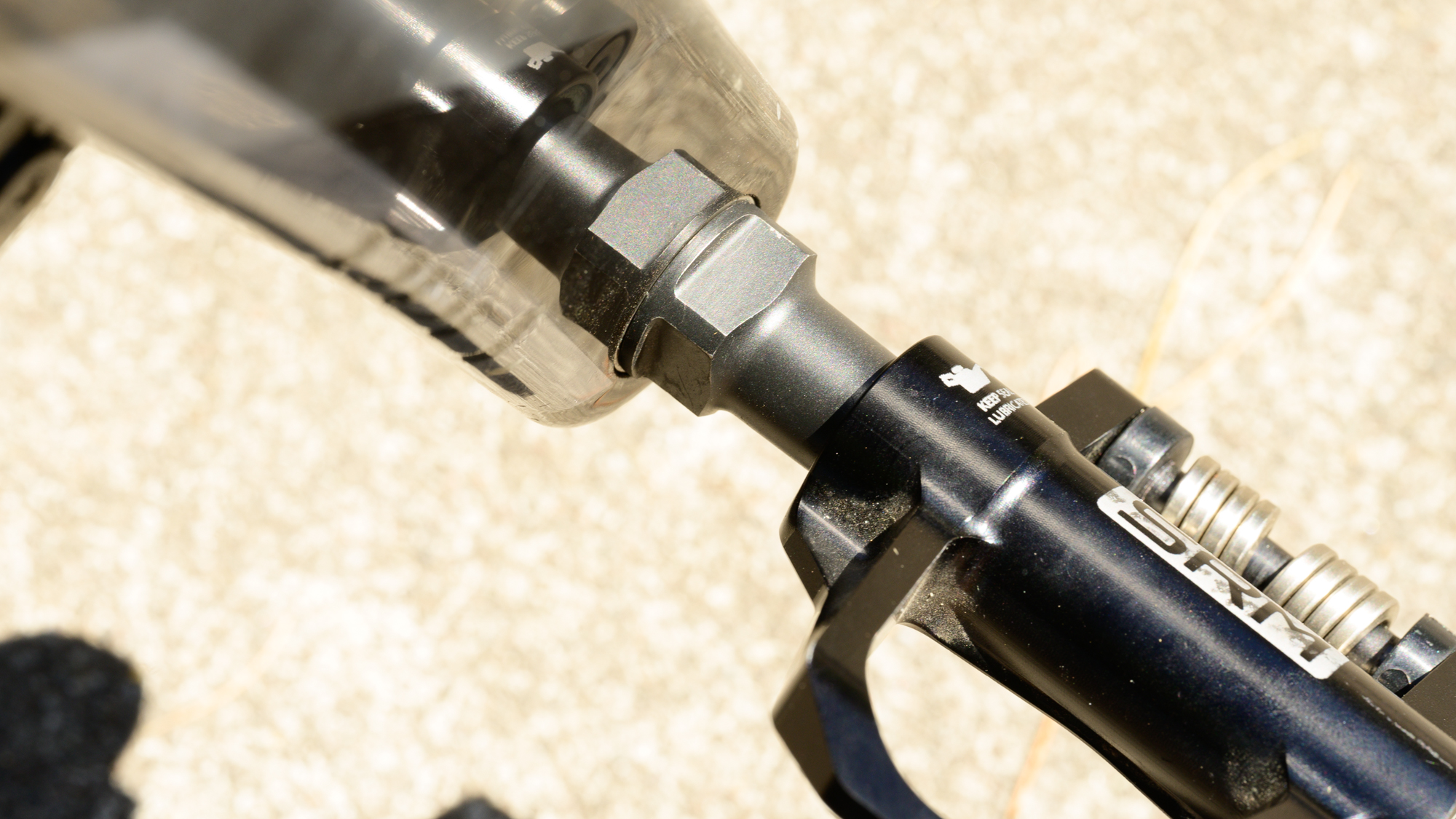
Verdict
If you compare the SRM and Garmin pedals, most things are pretty similar. Both have a 2-year warranty and Bluetooth plus ANT+ connection. Both require you bring a pedal wrench with you if you travel and both report power accurately. The decision between them is difficult but I kept asking a question as I was testing these.
I kept asking it in my head and I also posed the question to everyone I spent time riding with. "Would you choose a set of pedals that give less data, have a setup that's more involved, and cost more but are significantly nicer to use as pedals?" Then, the follow up question is always, "can you really tell the difference?" The truth is you definitely can tell the difference. SRM offers a lighter more precise feel and the Xpower pedals keep my foot from rubbing the crank. Although I've never had an issue with Garmin pedals, they don't feel as good when compared. If pedal feel is what matters to you the SRM pedals are the better choice, despite some drawbacks.
